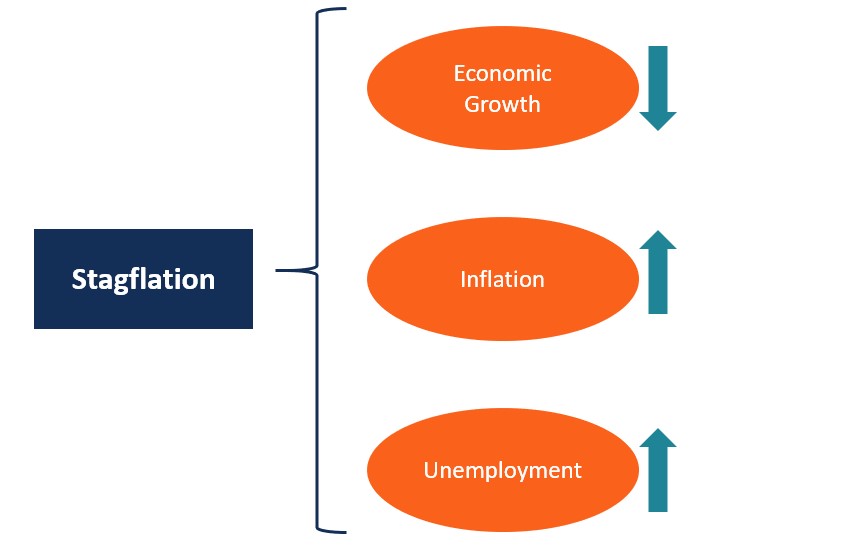- Stagflation or recession-inflation is a combination of stagnant economic growth, high unemployment, and high inflation.
- It presents a dilemma for economic policy, since actions intended to lower inflation may exacerbate unemployment. It’s an unnatural situation because inflation is not supposed to occur in a weak economy.

Causes of stagflation:
- Oil price rise: Stagflation is often caused by a supply-side shock. For example, rising commodity prices, such as oil prices, will cause a rise in business costs (transport more expensive) and short-run aggregate supply will shift to the left. This causes a higher inflation rate and lower GDP.
- Powerful trade unions: If trade unions have strong bargaining power – they may be able to bargain for higher wages, even in periods of lower economic growth. Higher wages are a significant cause of inflation.
- Falling productivity: If an economy experiences falling productivity – workers becoming more inefficient; costs will rise and output fall.
- Rise in structural unemployment: If there is a decline in traditional industries, we may get more structural unemployment and lower output. Thus we can get higher unemployment – even if inflation is also increasing.
READ MORE: Daily Prelims Booster
READ MORE: Daily News Analysis

Leave a Comment